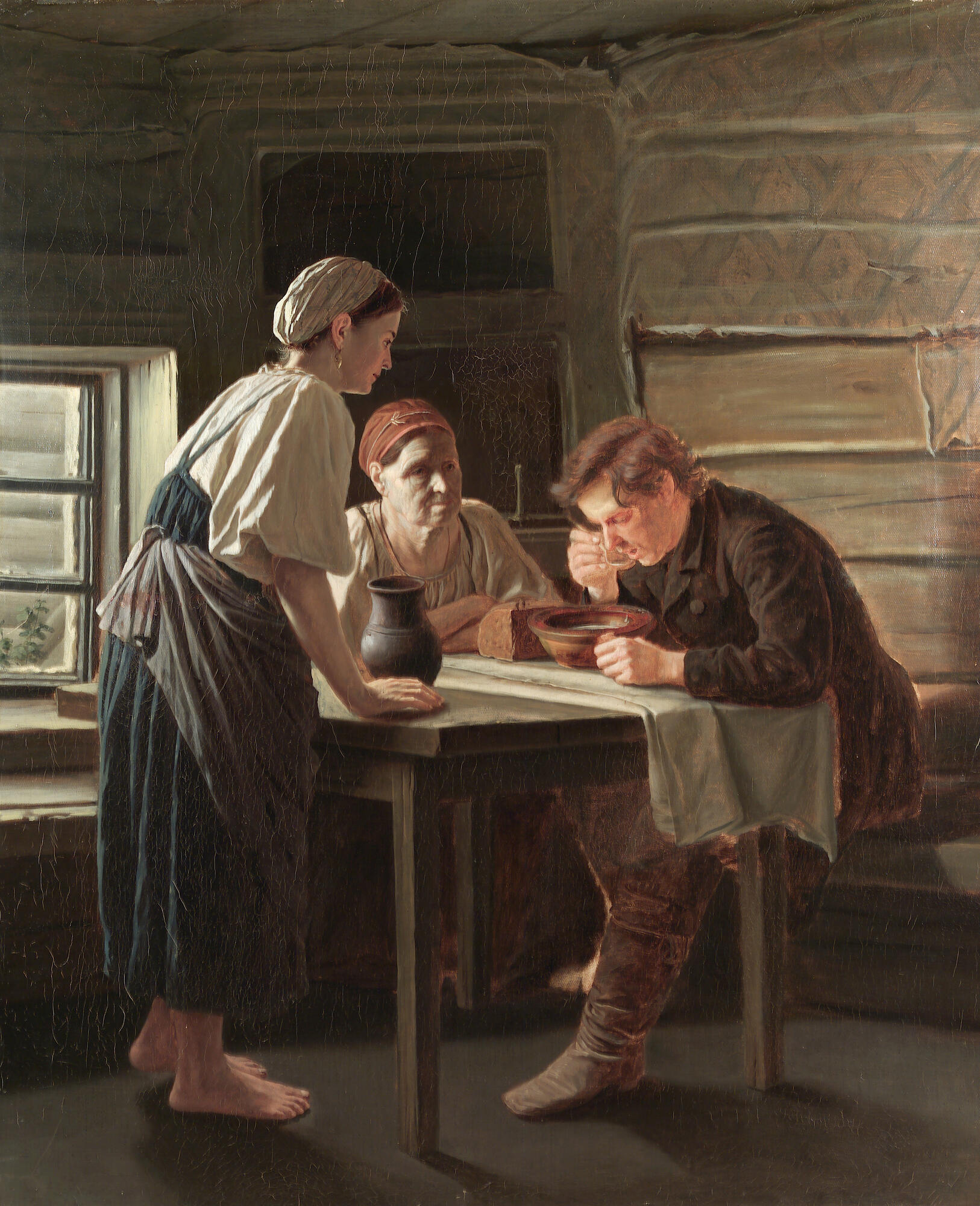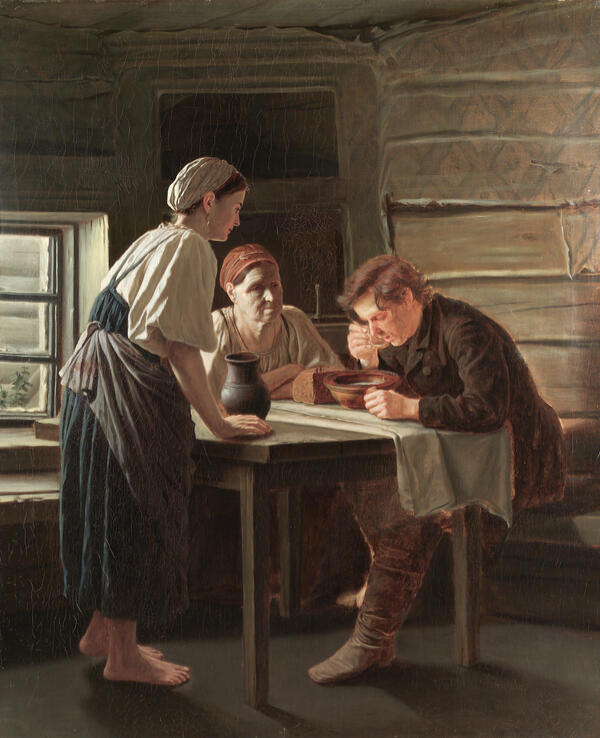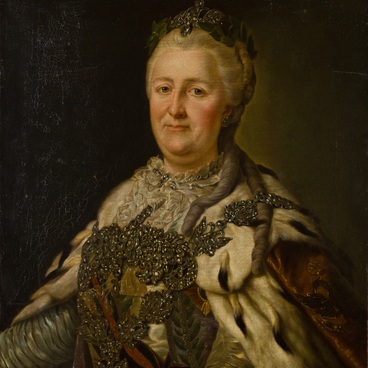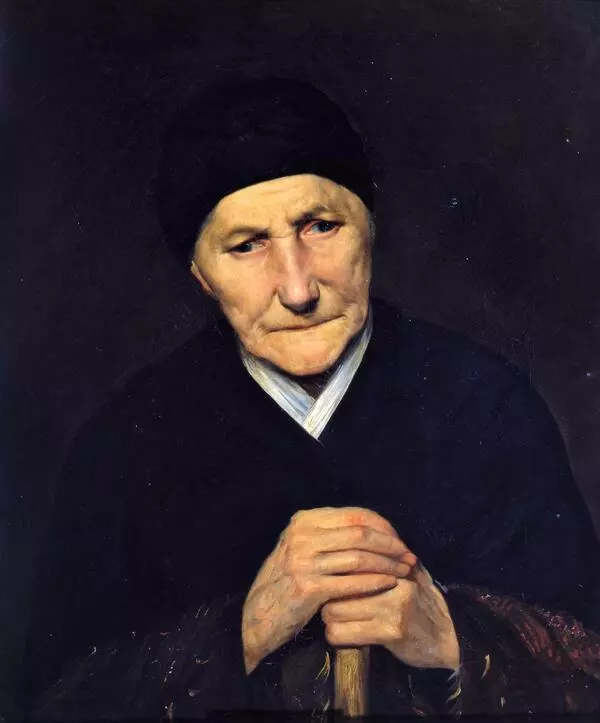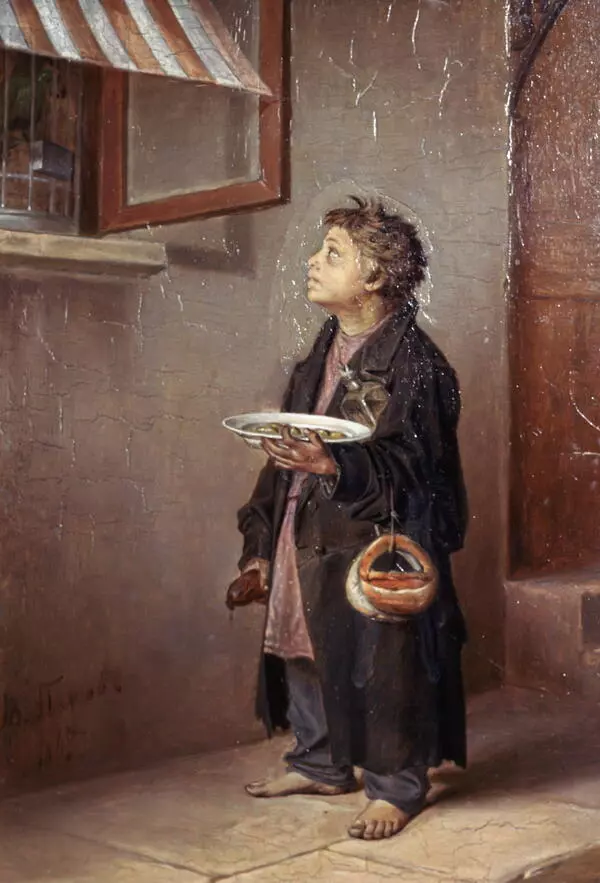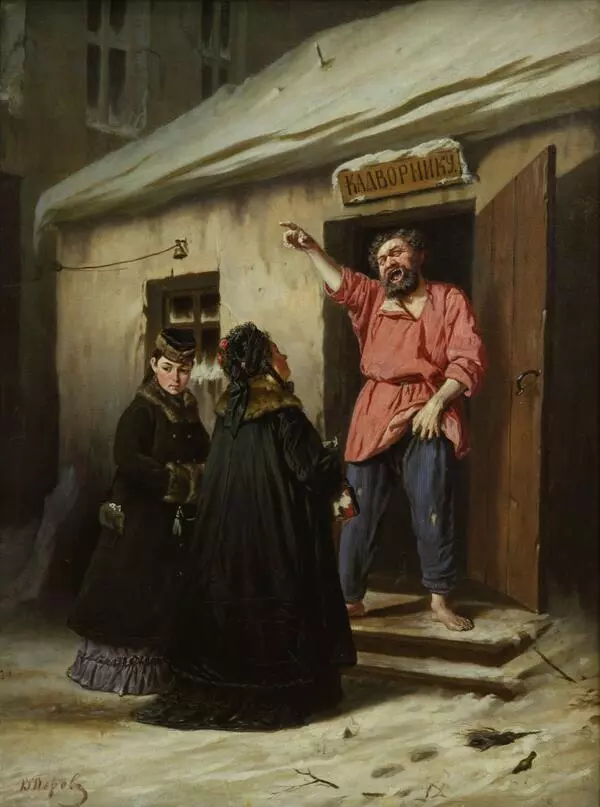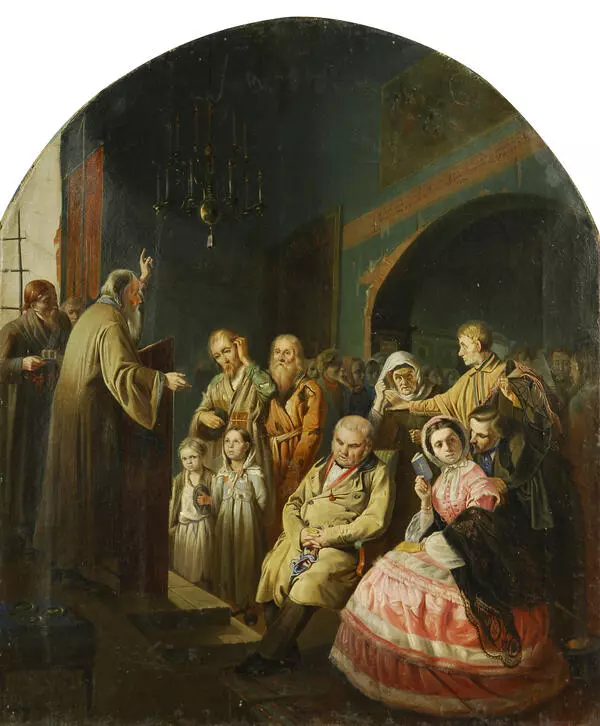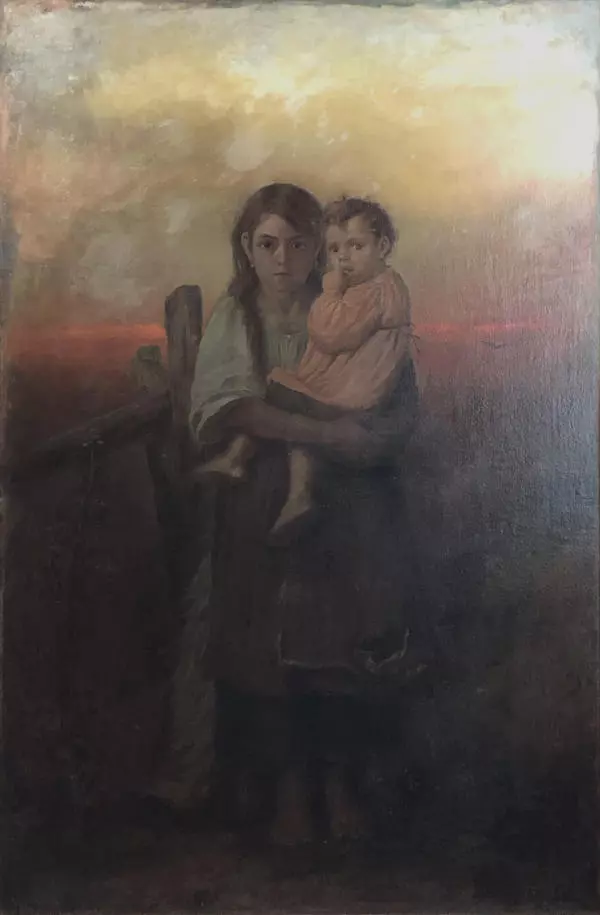It is impossible to talk about Russian realism of the 19th century without mentioning the figure of Vasily Perov. As an outstanding master of genre painting and portrait, Perov was able to bring these areas of painting to the fore in the 1860s. In art, he experienced the special influence of Pavel Fedotov, which led to a tendency towards depicting everyday scenes, often in an ironic, even grotesque way. Vasily Perov is one of the first artists who opened the theme of the plight of ordinary people and peasants. His works of the 1860s, imbued with an ‘accusatory’ mood, had a tremendous impact on the society of that time, prompting a new understanding of the world, where justice and goodness are present.
The painting by Vasily Perov on display ‘The Reception of a Wandering Seminary Student’ was created in 1874 and belongs to the next period of the artist’s work. The renowned music and art critic of the 19th century Vladimir Stasov, seeing this painting at the artist’s posthumous exhibition in Saint Petersburg, offered to purchase it for Pavel Tretyakov for his gallery. He drew the collector’s attention to the fact that “almost nobody except Perov took seminarians and students, that is, important notes of our time. They are great in type. A seminarian is a true future priest: everything in his face and figure is priestly (of a rural priest) is quite present… The seminarian is not even painted quite well, and the young peasant woman who treats him is very interesting… "
The painting is interesting because it reveals the artist from a new side for us. There is no tragedy of the 1860s, there is no humor, as in the works of ‘The Birds’ and ‘The Hunters at Rest’. The artist’s attention was drawn to the chamber, everyday moment of peasant life. The action develops calmly, without emotional outbursts. With maternal love and heartfelt sympathy, the peasant women treat the tired guest. Perov, continuing the traditions of Fedotov painting, is extremely attentive to the depiction of the subject environment. The light pouring from the window creates a special lyrical mood in the painting. Perov emphatically emphasized the seminarian’s face, bathed in a warm, golden light, in contrast to the cold white that illuminated the peasant woman. The feeling is created that the young man already belongs to the life of the church. Undoubtedly, this painting is one of the best works of Vasily Perov, dedicated to the peasant theme.
Tretyakov did not buy the painting for unknown reasons. Another Moscow collector, Ivan Tsvetkov, who in 1909 donated his collection to the city of Moscow, acquired it. In 1926, the majority of the works of this collection was included in the collection of the Tretyakov Gallery, the rest of the works were distributed through the State Museum Fund to other museums.
The painting by Vasily Perov on display ‘The Reception of a Wandering Seminary Student’ was created in 1874 and belongs to the next period of the artist’s work. The renowned music and art critic of the 19th century Vladimir Stasov, seeing this painting at the artist’s posthumous exhibition in Saint Petersburg, offered to purchase it for Pavel Tretyakov for his gallery. He drew the collector’s attention to the fact that “almost nobody except Perov took seminarians and students, that is, important notes of our time. They are great in type. A seminarian is a true future priest: everything in his face and figure is priestly (of a rural priest) is quite present… The seminarian is not even painted quite well, and the young peasant woman who treats him is very interesting… "
The painting is interesting because it reveals the artist from a new side for us. There is no tragedy of the 1860s, there is no humor, as in the works of ‘The Birds’ and ‘The Hunters at Rest’. The artist’s attention was drawn to the chamber, everyday moment of peasant life. The action develops calmly, without emotional outbursts. With maternal love and heartfelt sympathy, the peasant women treat the tired guest. Perov, continuing the traditions of Fedotov painting, is extremely attentive to the depiction of the subject environment. The light pouring from the window creates a special lyrical mood in the painting. Perov emphatically emphasized the seminarian’s face, bathed in a warm, golden light, in contrast to the cold white that illuminated the peasant woman. The feeling is created that the young man already belongs to the life of the church. Undoubtedly, this painting is one of the best works of Vasily Perov, dedicated to the peasant theme.
Tretyakov did not buy the painting for unknown reasons. Another Moscow collector, Ivan Tsvetkov, who in 1909 donated his collection to the city of Moscow, acquired it. In 1926, the majority of the works of this collection was included in the collection of the Tretyakov Gallery, the rest of the works were distributed through the State Museum Fund to other museums.
